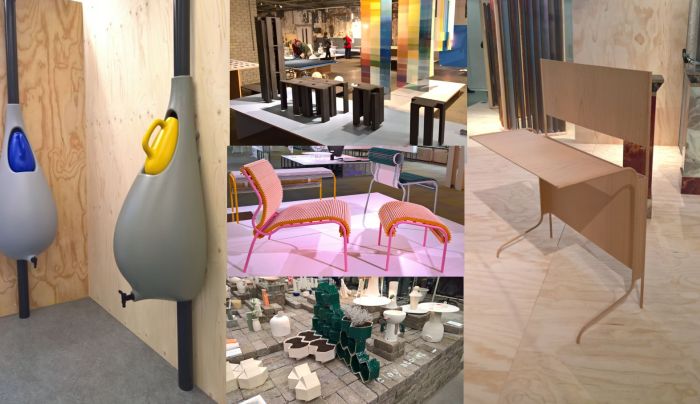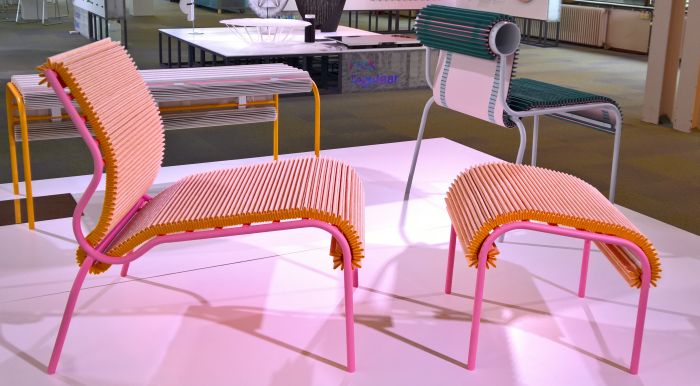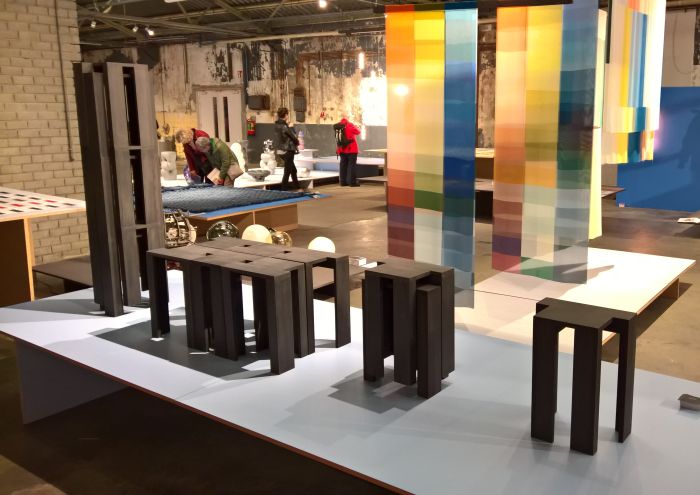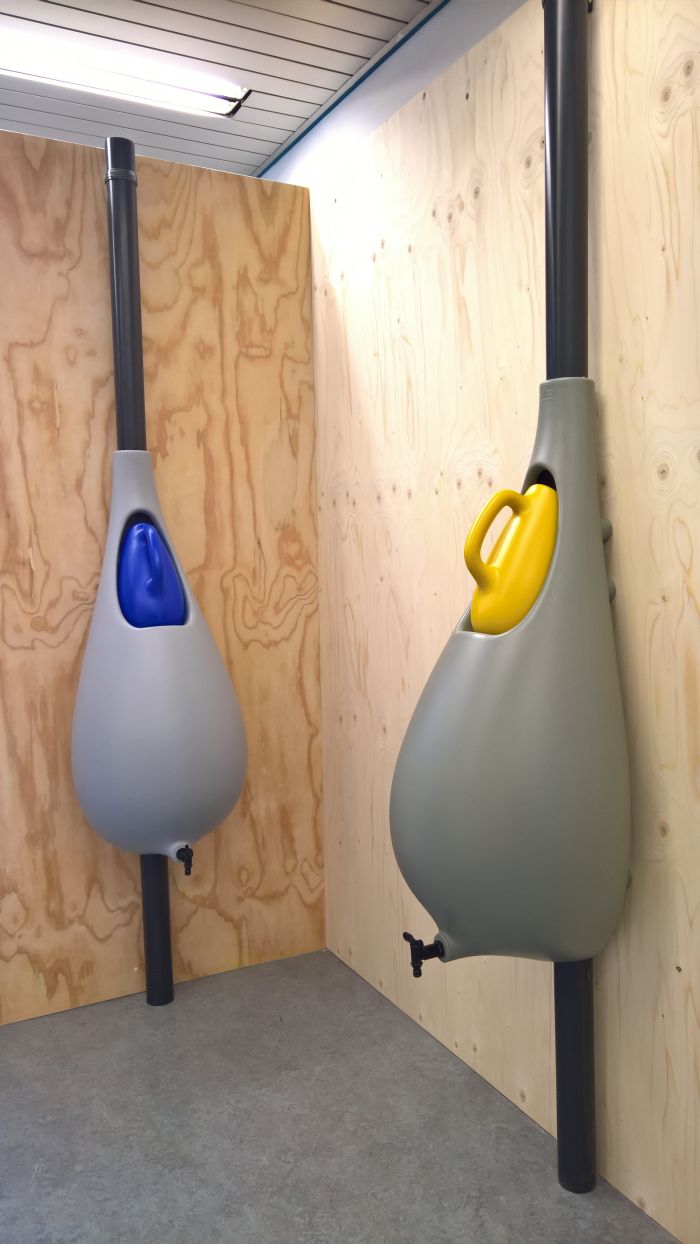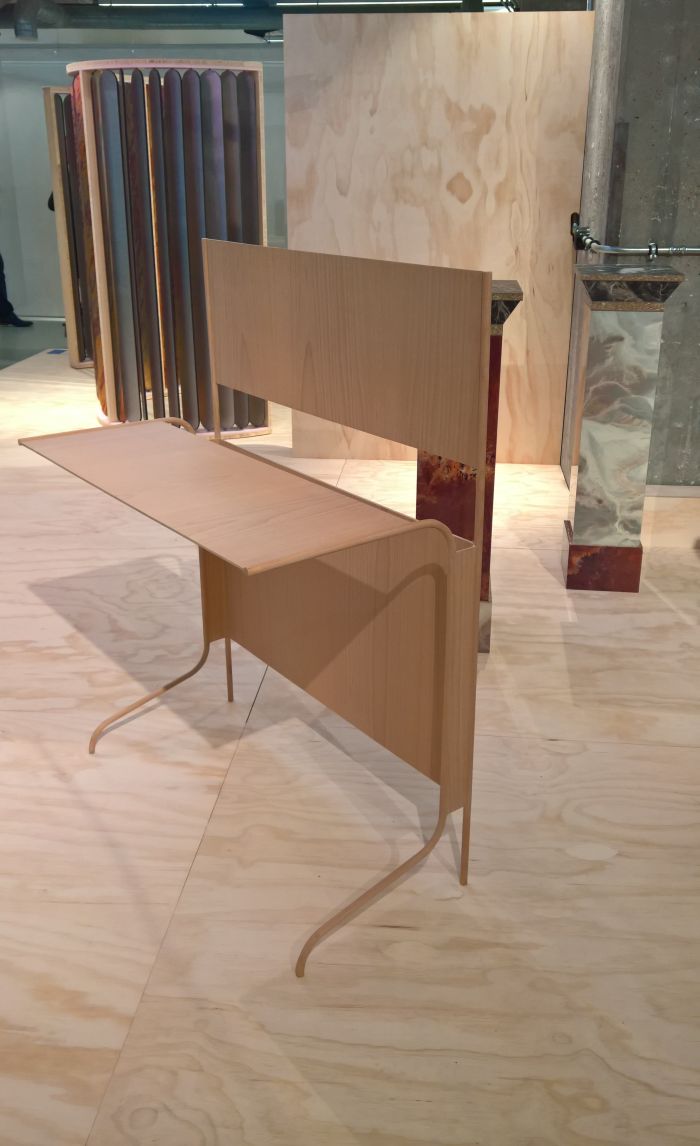Dutch Design Week Eindhoven 2017: High Five!!
Although as an event Dutch Design Week has always had a focus on presenting design in context, design in practice, our feeling is that of late that focus has intensified, something we thoroughly approve of as it helps make tangible that design is, can be, more than pretty objects; does however mean that you increasingly need to take more time with you to Eindhoven. Or accept that you are going to miss a lot of, potentially, interesting and thought provoking presentations.
Necessity meant that this year we followed option two.
But that still left us more than enough time to discover projects to get cross about, be confused by or simply quietly admire.
Or indeed vocally admire: our Dutch Design Week 2017 High Five!!
Pleated Seat by Joris de Groot
Realised in context of the project in4nite which saw 10 Arnhem based design studios challenged to work with Colback, a technical fabric produced by Low & Bonar and normally used in carpeting, flooring or automotive capacities, our interest in Joris de Groot‘s chair is and was much less the pleated, and thereby volume and stability enhanced Colback which formed the seat and backrest, as the metal frame over which it was lain and to which it was fixed.
Leaning pleasantly backwards, for us the key to the piece is the seat, or perhaps better put the way the short(er) backrest neatly compliments and contrasts the long(er)seat, and the fact that as an elongated, sloped seat it would appear to conform to the old Marcel Breuer-ism that a good chair should feature “inclination of the seat so as to support the upper leg along its full length without the pressure that arises with a flat seating surface”*. We never got to sit in it and so cannot confirm if it does, far less if the seating position is as pleasing as it is charming, but genuinely hope it is. Are however less convinced if pleated fabric is the best solution for seat and backrest, it appears a little lost in the construction, other solutions appear to us both more plausible and practical. But certainly a project with promise.
* Marcel Breuer, “Die Möbelabteilung des Staatlichen Bauhauses zu Weimar”, Fachblatt für Holzarbeiter, Berlin, Januar 1925
Stackable Stools by Bram Vanderbeke
Having not tried Bram Vanderbeke‘s new stool we can and will make no comment on the sitting experience; but in any case, for us the principle attraction in the work lies elsewhere.
The abstracted T form of the seat, and the thereby offset legs, creating not only the visual impression of a 3D Tetris piece, but offering Tetris-esque combination and stacking possibilities, including the option to create small table like structures, or to stack them into columns which resemble architecture features. And not the stack of stools most stacks of stools resemble, thus allowing them not only to be stored away when not in use, but unobtrusively so, decoratively even. Or obtrusively and decoratively, to judge by the room divider/wall presented on Bram’s homepage.
Very simple, and all the better for it.
Raindrop Rain Barrel by Bas van der Veer
Although using a barrel to collect rain water is as old as the barrel, and using barrels to collect rain water from drainpipes is as old as the drainpipe, the integration of the barrel into the drainpipe is, as far as we can ascertain, new. We happily admit to being no experts in the subject of domestic rain water harvesting, but from our elementary, post-Eindhoven, research into such concepts, the barrel is generally ground based and never integrated into the drain pipe. Merely attached.
While uncertain if with his Raindrop Rain Barrel Bas van der Veer has genuinely evolved the rain water collecting barrel, we are certain that he has created a charmingly irreverent yet very well considered and neatly proportioned object, and one which equally satisfyingly features a technology-free i.e. unbreakable, water regulation system. And the functional practicality, when not patent obviousness, of an integrated watering can.
Aside from being a neat piece of product design Raindrop is also a nice lesson of the importance of paying attention at trade fairs and design weeks: the Raindrop Rain Barrel was formally launched by Dutch manufacturer Elho back in September at spoga+gafa Cologne 2017. Where we missed it. Thankfully fate conceded to offer us a second chance.
later later by Matteo Viviano
Given the global distribution and long tradition of the brick, combined with its intrinsic simplicity, one could be forgiven for imagining that it would be a fully developed object. Not one in which any further development was possible.
Au contraire cher lecteur!!
With later later Matteo Viviano introduces a new level to the possibilities of the brick, or perhaps better put, takes the brick to new levels. In essence four bricks, two turned through their horizontal axis, two through their vertical, and then set through one another, the result is the base component of an interlocking construction system, a component which can be used in several positions to allow construction in various planes, and one which being hollow allows for the inclusion of, for example, plants. Or simply as small, yet practical, storage spaces.
Created by Matteo in context of the Ceramic Minor programme at the Design Academy Eindhoven, later later is ceramic and therefore very much a “brick” for creating smaller, decorative elements, and not one for larger, load-bearing structures. A state of affairs which is no way detracts from the charm, ingenuity, intelligence and functionality of the object.
Linear Wood by Christian Heikoop
We’ve never met Christian Heikoop, but having experienced two of his projects in recent months, we’re arguing he’s got an interest in reduction and visual lightness.
Exhibit 1: His Concave chair collection, which was nominated for the unique youngstar 2017 competition at spoga+gafa Cologne, a collection of airy, filigree objects produced from unfeasibly thin steel tubes, their ends flattened into almost non-existence, and which appealed formally and from the construction principle. Even if we questioned the stability.
Exhibit 2: Christian’s Linear Wood objects, realised in context of Transitions III, the third edition of an annual project organised by materials supplier Baars & Bloemhoff, and which saw 6 design studios invited to work with one of the materials in the company’s portfolio. The Linear Wood objects are just as ethereal as Concave, featuring as they do a thin metal structure covered in Decospan Decoflex beech veneer; our attention was however caught by the forms, existing as they do as very elegant evolutions and adaptations of existing furniture genres. If not specifically; their thinness, almost more silhouette than object character, meaning they resemble sketches, rough ideas noted quickly, and thereby leaving the user free to decide what they are, what they could be. We’re also getting a bit of an Edward J Wormley vibe, of a re-evaluation of the traditional in a contemporary context, without completely breaking with the past. Or put another way, there’s almost something baroque about them.
Tagged with: Bas van der Veer, Bram Vanderbeke, Christian Heikoop, Dutch Design week, eindhoven, High Five, Joris de Groot, Matteo Viviano
